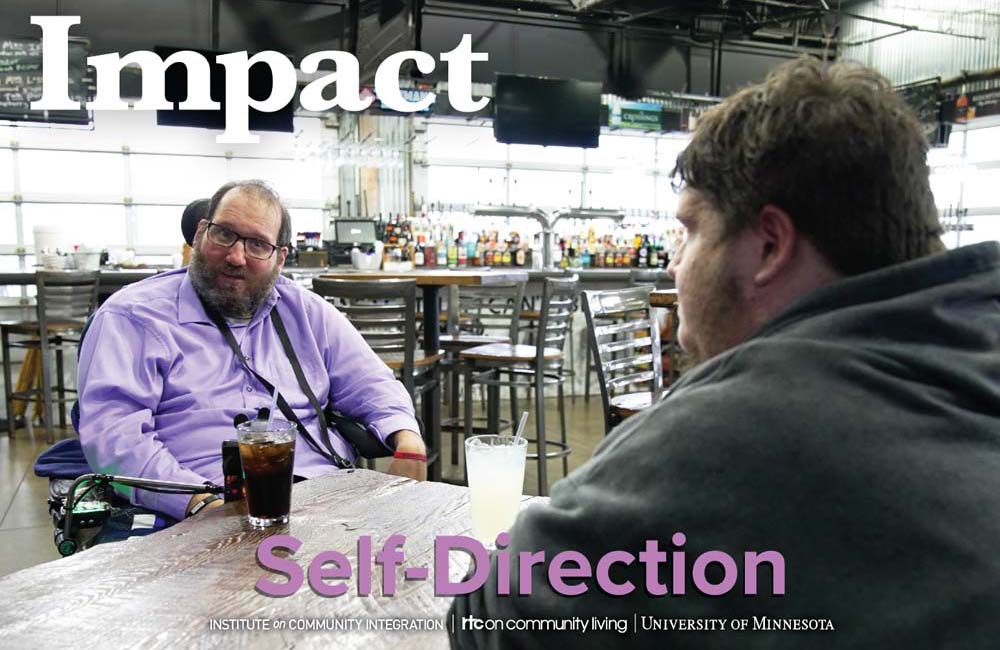The new issue of Impact explores the growing use of self-direction in service provision, particularly among people with intellectual and developmental disabilities (IDD).
Self-direction gives people the decision-making authority and responsibility for choosing the long-term services and supports that will help most in achieving the lives they want to live. It is an alternative to traditional IDD services obtained through a provider agency.
An estimated 2 million people now self-direct their services, according to an article by Kate Murray, president of Applied Self-Direction . Fewer than 20 percent of people with IDD self-direct, according to data shared in the issue from the National Core Indicators, but the number grew substantially during the COVID-19 pandemic.
“Self-direction, for me, represents the opportunity to take the journey of life,” Stasio said. “Through self-direction, I’ve had the opportunity to find out who I am as a person, and it has been great to have the staff support I had to do that.”
The arrangement enables people to choose to take responsibility and have the authority over decisions that would otherwise rest with a provider, said Marian Frattarola-Saulino, who also served as an editor for the issue. She is a board member for the Alliance for Citizen Directed Supports and founder of Values Into Action , which provides services to people who self-direct.
“At its core, [self-direction] is about freedom, autonomy, and responsibility,” Frattarola-Saulino said in discussing self-direction for Impact, The Conversation , the podcast that features Impact authors and editors discussing topics raised in each issue.
Wider availability of programs, better education, and the difficulty of finding staff and living arrangements, particularly during and after the pandemic, are driving the increase in participation, said Julie Bershadsky, director of community living and employment at the Institute on Community Integration, who also served as an issue editor.
Now in its 37th year, Impact is a print and digital magazine that is published three times a year. Each issue reports on a single topic of importance to people with intellectual, developmental, and other disabilities. It provides practical information useful to professionals in a variety of fields, including educators, community service providers, policymakers, advocates; and people with disabilities and their families. It also includes first-person stories written by people with lived disability experience that share how the issue topic affects their lives.
In the new issue, for example, Ellie Sondock shares what it’s like to be a direct support professional supporting people with disabilities, including the cumbersome process of onboarding with multiple financial intermediaries for different clients. As someone with autism who is an actress, she also shares the joy of supporting neurodiverse performers. She has connected with all of her clients through her affiliation with a theater company, rather than through traditional disability service networks.
View full article.











